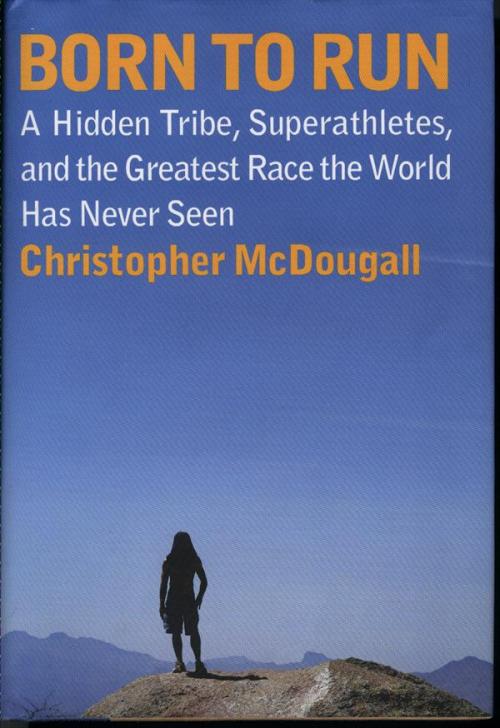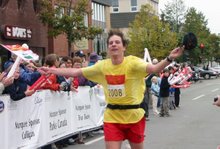"The other Alex Bain", formerly of Massachusetts, now of California, (we've written about him before here, here & here) just posted his 10 favourite quotes from Born to Run. Looks like a book some of those Brookvale Ultramarathoners would quite enjoy. This post is published on Alex's blog here:
http://maximumalexbain.com/post/205679738/heres-a-fun-new-thing-im-gonna-try-the-kindleWe follow not only Alex Bain's blog but also Furio Bain's blog. If you're a Facebook friend of (PEI's) Alex, you may have noticed he's a Fan of Furio Bain, the "cute, but complicated cat" who appears to be head of that Bain household.
I'm hoping Alex will forgive us for re-publishing it in it's entirety here.....
Here’s a fun new thing I’m gonna try: The Kindle allows you to do “virtual highlights” while you read, and it assembles the text you’ve highlighted on a web site. I went through my highlights from my last book, Born to Run, and here are my 10 favorite quotes. I’ll try to post one of these every time I finish a book, from now on.
Born to Run
- I’d learn that iskiate is otherwise known as chia fresca—“chilly chia.” It’s brewed up by dissolving chia seeds in water with a little sugar and a squirt of lime. In terms of nutritional content, a tablespoon of chia is like a smoothie made from salmon, spinach, and human growth hormone. As tiny as those seeds are, they’re superpacked with omega-3S, omega-6S, protein, calcium, iron, zinc, fiber, and antioxidants. If you had to pick just one desert-island food, you couldn’t do much better than chia, at least if you were interested in building muscle, lowering cholesterol, and reducing your risk of heart disease; after a few months on the chia diet, you could probably swim home.
- Coyote Fourplay, a semi-secret, invitation-only free-for-all described as “a four-day orgy of idiocy involving severed coyote heads, poisoned snacks, panties in trees, and one hundred twenty miles of trails you’ll wish you’d missed.” Fourplay is held at the end of February every year in the backwoods of Oxnard, California, and it exists to give a small band of ultrarunners a chance to whip each other’s butts and then glue said butts to toilet seats. Every day, the Fourplayers race anywhere from thirty to fifty miles on trails marked by mummified coyote skulls and women’s underwear. Every night, they face off with bowling tournaments and talent shows and endless guerrilla pranks, like replacing ProBars with frozen cat food and gluing the wrappers back shut.
- Eric and I eased back to a walk, obeying the ultrarunner’s creed: “If you can’t see the top, walk.”
- Wilt Chamberlain, all seven feet one inch and 275 pounds of him, had no problem running a 50- mile ultra when he was sixty years old after his knees had survived a lifetime of basketball.
- It was a mystifying gap in sports literature; distance running is the world’s No. I participation sport, but almost nothing had been written about its No. I practitioners.
- “I just don’t think I’m built for running fifty miles,” I said. “Everyone is built for running,” he said. “Every time I up my miles, I break down.” “You won’t this time.” “Should I get the orthotics?” “Forget the orthotics.” I was dubious, but Eric’s absolute confidence was winning me over. “I should probably cut weight first to make it easier on my legs.” “Your diet will change all by itself. Wait and see.” “How about yoga? That’ll help, yeah?” “Forget yoga. Every runner I know who does yoga gets hurt.” This was sounding better all the time.
- “Kenyans have superquick foot turnover,” Ken said. “Quick, light leg contractions are more economical than big, forceful ones.” “I don’t get it,” Alan said. “Don’t I want a longer stride, not a shorter one?” “Let me ask you this,” Ken replied. “You ever see one of those barefoot guys in a 10K race?” “Yeah. It’s like they’re running on hot coals.” “You ever beat one of those barefoot guys?” Alan reflected. “Good point.”
- If you had to choose between Neanderthals and Early Us in a Last Man Standing contest, you’d go Neanderthal all the way. So—where are they? Within ten thousand years of the arrival of Homo sapiens in Europe, the Neanderthals vanished. How it happened, no one knows. The only explanation is that some mysterious X Factor gave us—the weaker, dumber, skinnier creatures—a life-or-death edge over the Ice Age All-Stars. It wasn’t strength. It wasn’t weapons. It wasn’t intelligence. Could it have been running ability?
- Our diet shifted over the centuries from chewy stuff like raw roots and wild game and gave way to mushy cooked staples like spaghetti and ground beef, our faces began to shrink. Ben Franklin’s face was chunkier than yours; Caesar’s was bigger than his.
- To run an antelope to death, Lieberman determined, all you have to do is scare it into a gallop on a hot day. “If you keep just close enough for it to see you, it will keep sprinting away. After about ten or fifteen kilometers’ worth of running, it will go into hyperthermia and collapse.” Translation: if you can run six miles on a summer day then you, my friend, are a lethal weapon in the animal kingdom. We can dump heat on the run, but animals can’t pant while they gallop.





























1 comment:
Great quotes, thanks!
Post a Comment